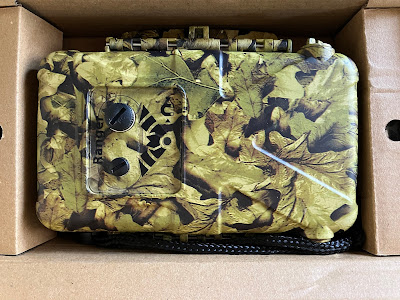An Addendum Post - To Accompany Today's Live Webinar On BatAbility Club (on The Microscopy of Pond Water).
April 8th 2023
Below, are some of what I consider the “better” Links…
Micscape Magazine (microscopy-uk.org) is a virtual online “Headquarters” for all things microscope-related in The UK. It provides very well-organized resources for learning more about the world of microscopy - I can’t recommend it enough!
Here is a wonderful online document; which basically provides a concise education on microscopic organisms. Along with their place (and our place) in the grand scheme of things, all in just 31 pages!
Here's a Link with lots of great information available - Including a Microscopy Primer, the anatomy of a microscope, and other topics.
Even more detailed information, and especially brand/model-specific info, may be found at the major microscope manufacturers’ sites. They are: Olympus, Nikon, Zeiss, and Leica/Leitz. They’re often referred to as "The big four".
A Link from Leica
A Link from Nikon.
A Link from Zeiss.
A Link from Olympus.
Below are some direct links, to the various types of microscopes I discussed - From none other than one of my favourite online stores - NHBS! As I suppose is the case with many of you (Naturalists, Biologists, Scientists, et al) I feel like "a kid in a candy store" whenever I visit NHBS... Now, if someone would be kind enough to send me a Gift Certificate... 😁
Stereo Microscope:
Binocular Compound Microscope:
In an effort to demonstrate the variety of colours one may come across - Some pond water organisms I've recorded in years past - YouTube Videos:
Protist 1
Protist 2
There are more! Located in a Playlist named 'Microscopy - Pond Water Samples'
The (free) User Manual for The Nikon Labophot microscope (the one I currently use).
A YouTube video discussing a DIY, cell phone-based solution, for those wanting to see fluorescence microscopy. It's a fairly recent video, posted only 4 months ago.
Now, if you've made it all the way through this post, to this point - You deserve to see the following incredible videos - You've "earned" it!
Here's a link to a very comprehensive, but entertaining YouTube video, which basically goes through almost all of the microscopic creatures you'd encounter, while examining pond water samples.
It would take years of exploring, to see the diversity of creatures shown in this video. Not only are almost all of the most commonly encountered creatures covered; but they are shown using many different microscope techniques:
- Brightfield
- Polarization
- Phase Contrast
- Fluorescence
- DIC (Dual Interference Contrast) - An expensive technology!
I plan to add more excellent links to this post soon!
I'm very keen on Microscopy, and I have no shortage of things to share...
Until next time,
Happy bat detecting! Pond dipping!

















